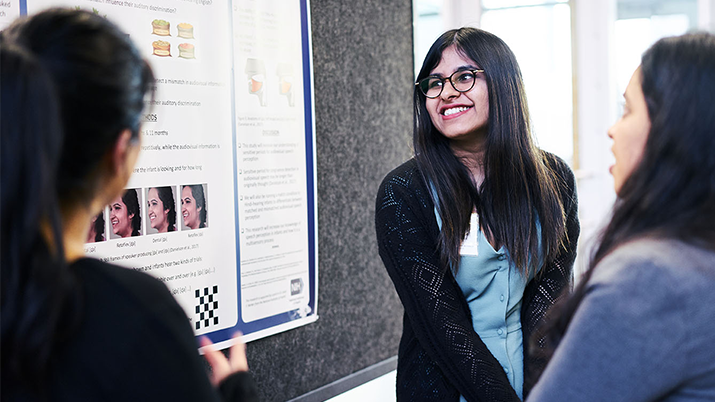Looking for love and looking for sex are two different things, even at the level of human evolutionary biology. Alec Beall, a postdoctoral researcher in UBC’s department of psychology, has studied the conflict between them. Now he is taking a closer look at the hormones involved. To usher in Valentine’s Day, he sat down with UBC News to discuss his research.
Your research focuses on something people have called “the love hormone.” What is that?
Oxytocin is a hormone involved in social bonding, and in parent-infant bonding. Basically, when you look into the eyes of a child or a cute, vulnerable puppy, past research has shown that you release oxytocin naturally. If testosterone is the sex drive hormone, then oxytocin would be more of the nurturant hormone. My previous behavioural work suggests sex drive and nurturance are opposing motivations, so oxytocin and testosterone may regulate opposing motivations and behaviours.
Why have humans evolved to have separate hormones for sex and love?
You need to acquire a mate in order to successfully reproduce. But in order to successfully reproduce your genetic material, your child has to grow to reproductive age. Within evolutionary biology, the mating/parenting trade-off suggests that because we have limited bioenergetic resources, we cannot devote them to both parenting existing offspring, as well as producing a bunch of additional offspring. Our bodies make an unconscious decision: we either invest in mating, or we invest in parenting.
What has your past research revealed about this trade-off?
My dissertation research looked at priming people to feel tenderness, and seeing how it affected their short-term mating drive. I showed UBC undergraduates pictures of puppies and kittens, and had them think about what it would be like to take care of them. Then they took a survey that assessed their desire to sleep around. What I found was that when people were in this parental caring mindset, they were less likely to report a desire to sleep around. When we primed them with pictures and erotic scenarios to make them think about a short-term mating encounter, they reported lower tenderness responses to pictures of infants. All these motivations are driven by complex underlying physiological components, which is what drove me to the oxytocin study.
How are you conducting this study?
We’re bringing 25 men and 25 women into the lab at two separate times. They’ll receive a dose of intranasal oxytocin or a placebo, but they won’t know which. What we’re expecting is that people under oxytocin will exhibit a weakened desire to sleep around because the oxytocin temporarily boosts their desire to parent and nurture. We hope to capture this change in motivation using several methods. First, we’ll use eye-tracking to note whether a participant’s gaze is drawn more to attractive short-term sexual opportunities or to human infants, and to the bodies of attractive swimsuit models or to their faces. Next, we are using questionnaires to assess whether participants report a reduced attraction to short-term mating prospects. Finally, we are using saliva tests to determine how much testosterone participants produce in reaction to erotic stimuli. We’re expecting that oxytocin will increase parenting motivation, and we’re using a number of psychological, behavioural, and physiological measures to see what happens with the short-term mating drive.
What are the benefits of understanding all this better?
I don’t want to extrapolate too far, but good parenting practices tend to follow from attentive, tender, and caring parents. If there’s any way we can understand the underlying physiology behind what makes a good parent, it can only be helpful for at-risk children. It’s possible that by understanding the interaction between these competing drives, we might be able to actually figure out ways to increase the parenting motivation.
This Q&A was originally posted on UBC News.



